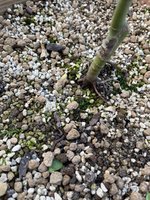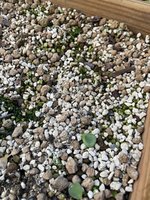I don't want to derail this thread, but you are discussing a lighting technology - versus what KIND of lighting makes you successful or not with woody plants. Metal halide (a lighting technology) can be good or bad. LED's (a different lighting technology) can also be good or bad. What you want is the spectral intensities that are absorbed by the chlorophyll in the trees - and which can be artificially created by either metal halide or LED technologies. LED's
tend to be more energy efficient (producing more lighting for less electricity) while metal halides
tend to be less so (producing a lot of waste heat).
I am going to start this thread with this post, add to it as I have time, and eventually compile it into an article.
There have been a lot of requests for information on artificial lighting for bonsai (particularly at this time of year). I wanted to write a reference piece that was both scientifically correct, but accessible to people who don't want to learn phytobiology

Let's start with a few basic terms. Many people think of lighting in terms of "watts" or "wattage". This is an incorrect artifact from the days when all lighting was incandescent, was more or less the same...



